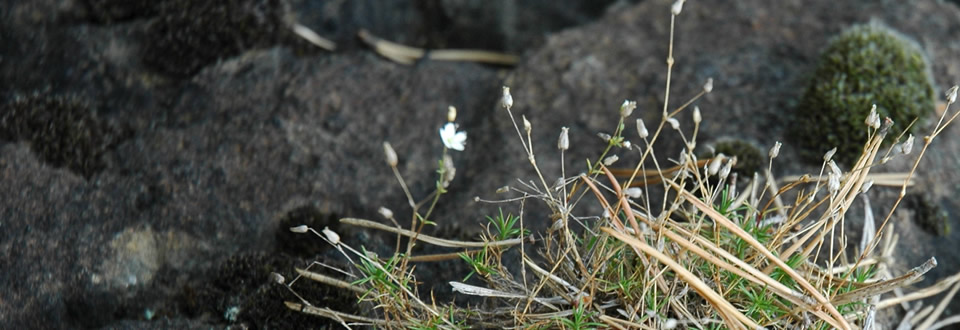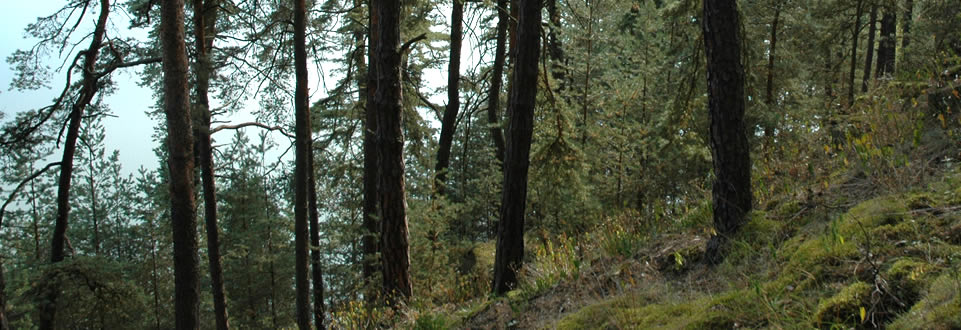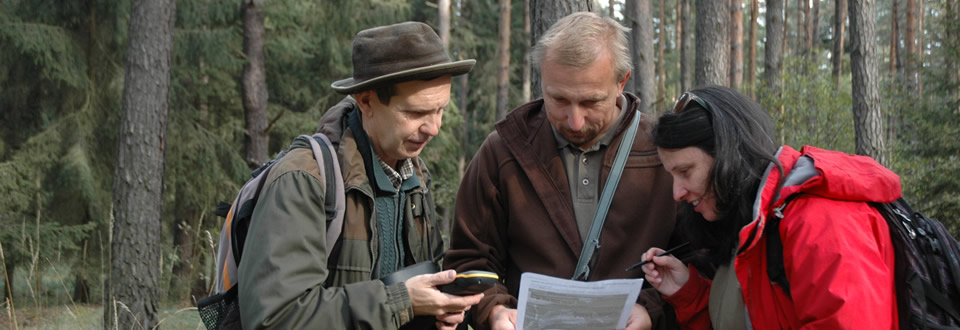Minuartia smejkalii
Minuartia smejkalii is inconspicuous, densely tufted perennial herb. Outside of the flowering period it can be very easily overlooked or, at the first glance, mistaken for a tuft of grass or moss.
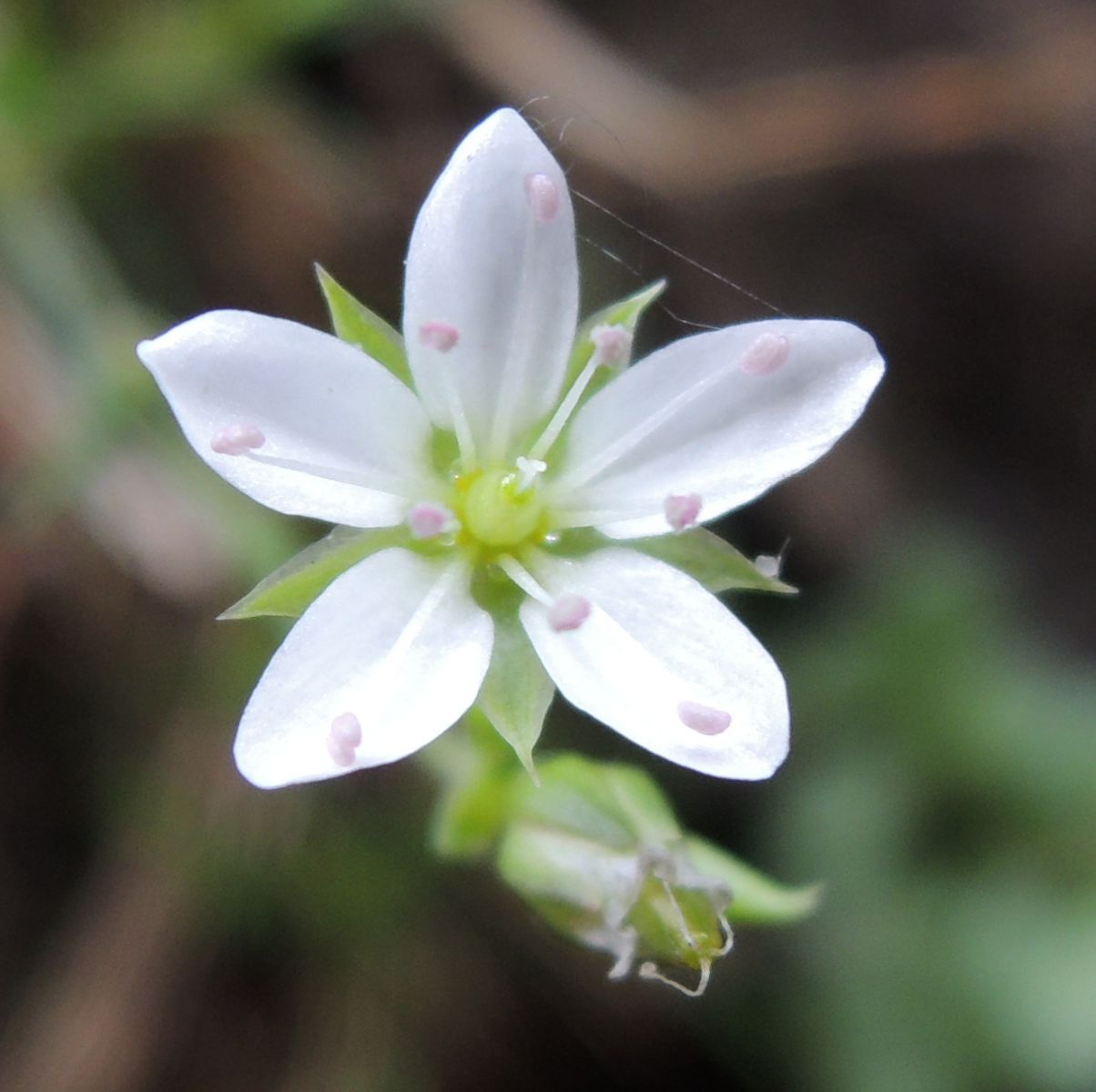 |
| Minuartia Smejkalii blooming |
Tufts of M. smejkalii are made up of tiny stems, approximately 5 to 15 cm high, with narrow leaves similar to pine needles, but soft. M. smejkalii blooms by small white flowers, which are pollinated by insects. The main flowering period is in June and July. During the summer clumps are usually dry and M. smejkalii grows and flowers again in September, when it is cooler. The species reproduces mostly by seeds or vegetatively by breaking up of the tufts into multiple smaller.
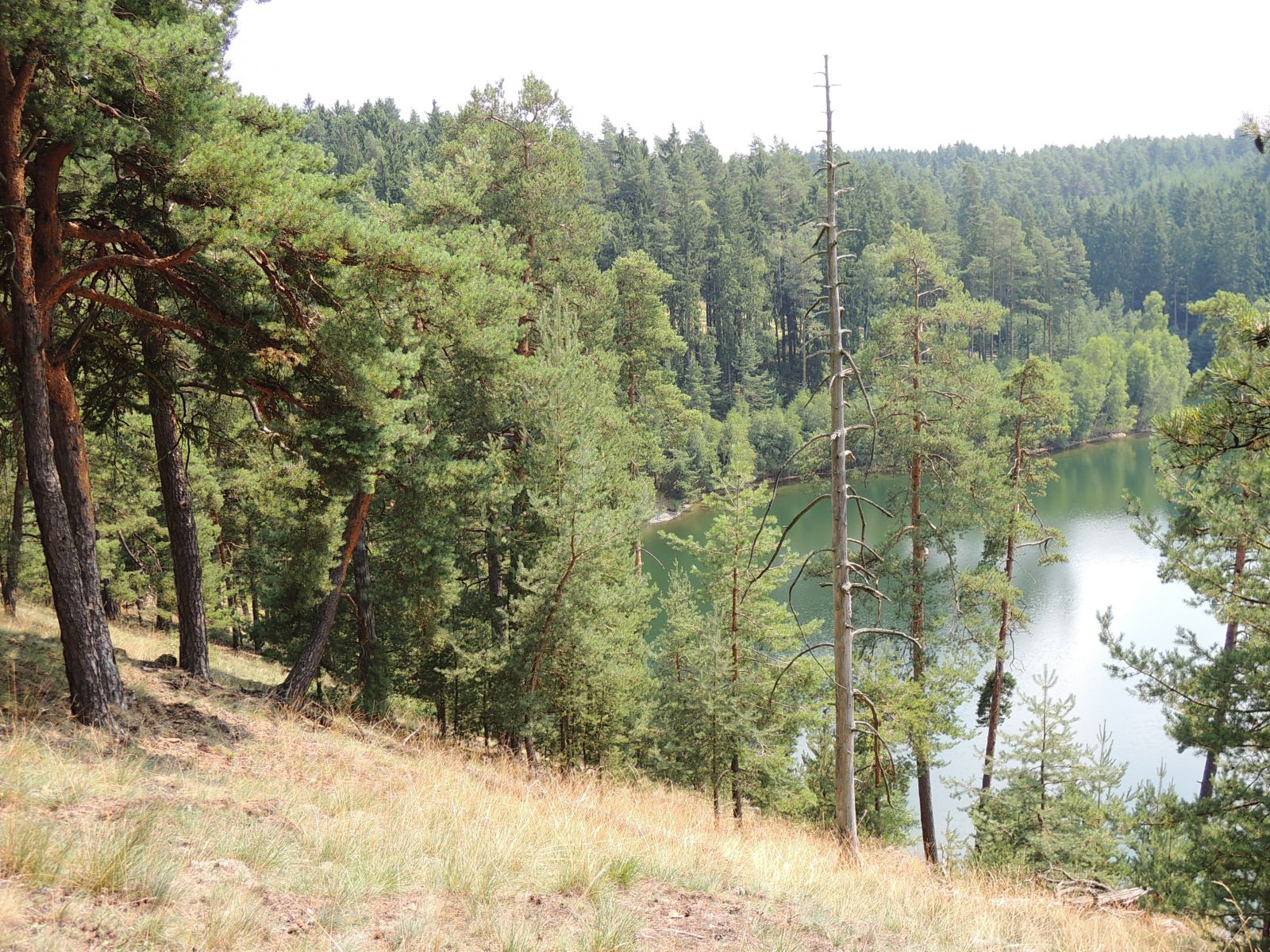 |
| Pine forest on Serpentine |
The species is an obligate serpentinofyt and thus it occurs only on serpentine sites. M. smejkalii prefers rock platforms, crevices and shallow serpentine soils and unconnected grasslands in bright pine forests. Species prefer sunny habitats with sporadic vegetation. Once the locality becomes to be overgrown by competitively-strong plants, M. smejkalii ceases to prosper and quite quickly becomes extinct.
M. smejkalii is late glacial or early postglacial endemic species. It arrived to the Czech Republic in the last ice age, when the mountain species spread from the Alps into lower positions and in almost the whole of Europe. After the end of ice age M. smejkalii stayed here and due to its isolation and specific habitat conditions, it has evolved into new species. More information about other closely related Minuartia species that occur in the Czech Republic, you can read here.
M. smejkalii is Czech endemic species, whose worldwide distribution is currently limited only to two nearby locations, both included in the NATURA 2000 network. The first location is in the Želivka Site of community importance (SCI) - in part of the territory protected as National natural monument (NNM) Hadce u Želivky. The second location is in the Hadce u Hrnčíř SCI. In the past, M. smejkalii also occurred at one other location - NM Borecká skalka, where all individuals have already gone extinct. Due to the uniqueness of the species and its limited distribution M. smejkalii is protected by law at Czech as well as international level.






